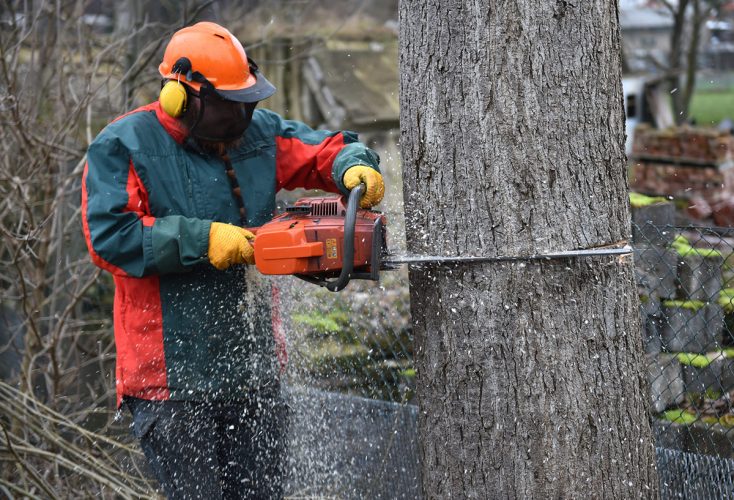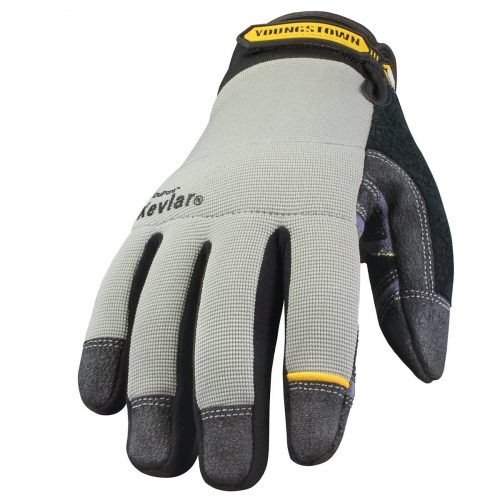The Centers for Disease Control and Prevention (CDC) reports around 36,000 people are injured by chainsaws every year.
If part of your work involves working with chainsaws, protective wear can help you prevent these potentially fatal injuries.
To help you get the protection you need when using a chainsaw, we’ve put together this guide to show you what you should wear and avoid wearing while working with a chainsaw.
Keep reading to learn about how wearing protective clothes is an essential part of any job that involves a chainsaw.
1. Head Protection
One of the worst places to be injured is on your head. However, it’s also one of the more common places for chainsaw injuries thanks to chainsaw kickback.
To avoid life-threatening injuries to the face and head, you need to have head protection in place. While there are other areas of safety gear that you can get away with cheaper options, this is one what you don’t want to scrimp on.
Properly protecting your head could save your life, so be sure to get a high-quality helmet that’s designed to withstand the force of a chainsaw so your head stays intact.
2. Eye Protection
Flying woodchips are an inevitable part of cutting apart lumber, and there’s no way to know for sure where they’re going to go. For that reason, you need to use eye protection while using a chainsaw.
Glasses are not enough to stop a piece of wood that flies up that fast, so you need to have safety goggles in place that come into contact with your skin on all sides of your eyes.
3. Hearing Protection

The sound a chainsaw makes is around 120 decibels, just 30 decibels shy of causing eardrum rupture. Even so, exposure to the sound of a chainsaw, especially when you’re holding it, can damage your ears over time.
Always use proper hearing protection when working with chainsaws. In most cases, earplugs are not enough. Instead, you’ll want to get earmuffs that can adequately surround your ears to block all chainsaw noises.
We recommend checking out our post on chainsaw helmet systems which allow you to protect your head, eyes, and ears all with one piece of equipment.
4. Chainsaw Chaps
The second most common area of the body that gets injured with chainsaws is the legs. This most often occurs when the chainsaw slips downward after cutting through a log more quickly than anticipated.
To avoid having to live the rest of your life like a pirate, take precautions by adding a pair of chainsaw chaps to your list of essential clothing to wear every time you go out to cut things.
Chainsaw chaps are specifically designed to stop a chainsaw in its tracks if it comes into contact with them, keeping your legs safe. The best ones use several layers of protection to ensure safety from glancing blows.
5. Logging Boots
One part of the leg that’s injured frequently in chainsaw accidents is the foot. You can also be injured during this type of work by falling logs or lumber.
Be sure to find a pair with steel toes. These will protect your foot’s most vulnerable parts from the blade of a chainsaw or anything heavy falling on top of it.
6. Chainsaw Gloves

The most common type of injury suffered by chainsaw users is on the hand. This type of injury can also be caused during kickback.
Although it’s not the most deadly place to be injured by a chainsaw, it can be the most devastating. A serious enough injury to the hand can end your career if you work primarily with your hands and make everyday life more difficult.
You should always work with the built-in handguards in position. However, don’t trust these to protect your hands since they can only protect your hands while they’re in position.
Picking gloves can be difficult because you still need to be able to use your fingers while using a chainsaw. However, the right gloves could make a difference between having a permanent disability and simply needing to replace damaged gloves.
What Not to Wear
In addition to choosing to wear all of the aforementioned safety clothing, there are a few things you want to avoid wearing. Let’s quickly take a look at those.
Restrictive Clothing
When your movements are restricted, you’re far more likely to injure yourself than if you’re wearing clothing that provides you with a full range of motion. While they may still be in style, tight pants may not be best when working.
This is particularly true when it comes to your arms, so avoid wearing bulky jackets that may make it hard to manoeuvre a chainsaw. Instead, choose clothes that fit properly and aren’t too tight.
Loose Clothing
You also don’t want to go to the opposite extreme and get clothing that’s far too loose. This can also restrict your movements because it’s hard to move both your arm and the sleeve when there’s so much space between them.
This also goes for any clothing that has anything hanging from it. These loose pieces can get caught in the chainsaw, other machinery you may be working with, or on tree branches.
Inappropriate Seasonal Clothing
It’s also important to dress for the weather when going out to work with a chainsaw. Don’t underdress and assume the work will keep you warm because shivering can put you in a dangerous situation.
On the other hand, wearing heavy clothing in warm weather could lead to sweat running into your eyes. Once again, this can make it difficult and therefore dangerous to operate a chainsaw.
Looking for the More Protective Wear and Safety Tips?
Now you know the best protective wear to put on when using a chainsaw. As you can see, spending your money on protective clothes is an investment that can help you save money on medical bills by avoiding unintended injuries.
Keep reading our blog for more tips on working with chainsaws along with reviews to help you choose the best one. Be sure to brush up on how to use a chainsaw properly before you head out next time.

